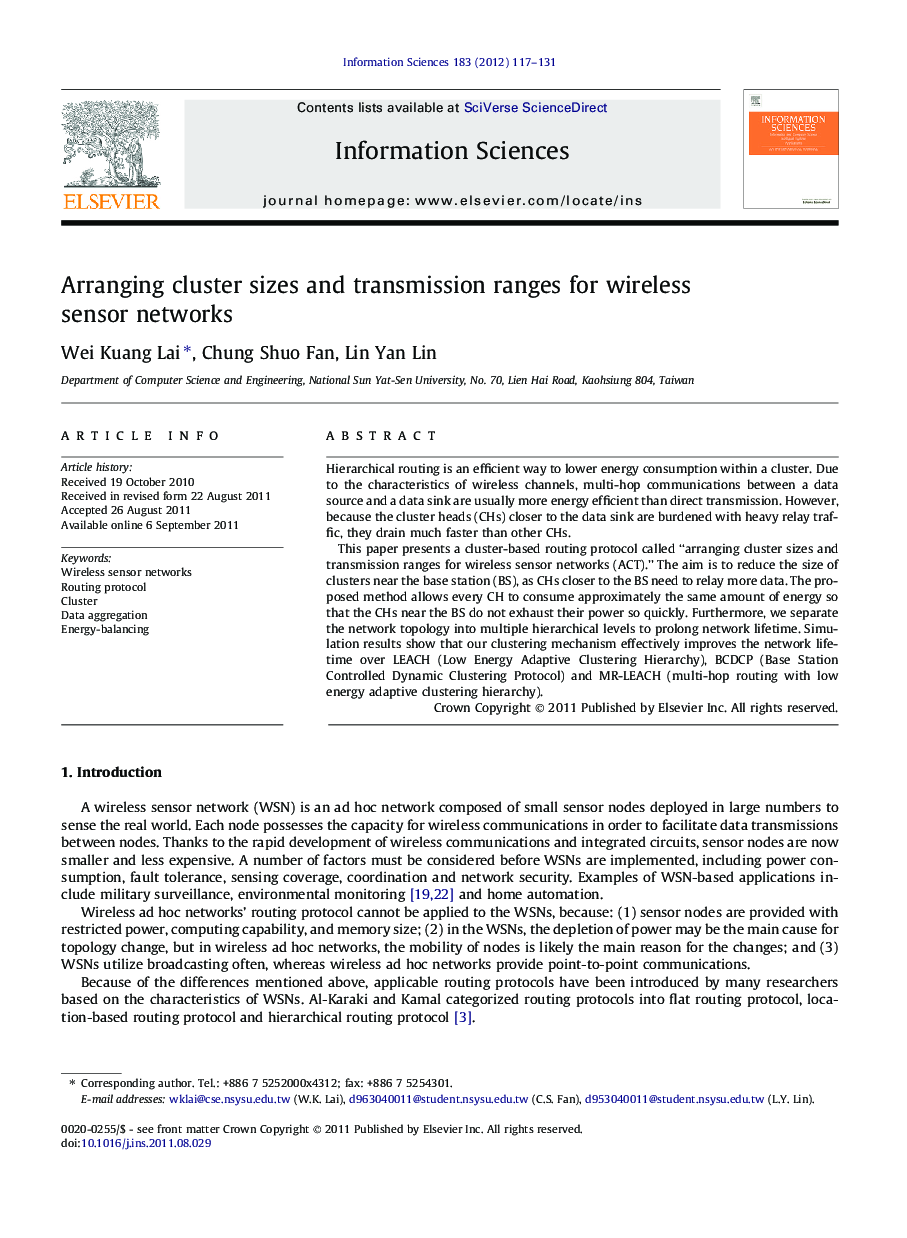| Article ID | Journal | Published Year | Pages | File Type |
|---|---|---|---|---|
| 395185 | Information Sciences | 2012 | 15 Pages |
Hierarchical routing is an efficient way to lower energy consumption within a cluster. Due to the characteristics of wireless channels, multi-hop communications between a data source and a data sink are usually more energy efficient than direct transmission. However, because the cluster heads (CHs) closer to the data sink are burdened with heavy relay traffic, they drain much faster than other CHs.This paper presents a cluster-based routing protocol called “arranging cluster sizes and transmission ranges for wireless sensor networks (ACT).” The aim is to reduce the size of clusters near the base station (BS), as CHs closer to the BS need to relay more data. The proposed method allows every CH to consume approximately the same amount of energy so that the CHs near the BS do not exhaust their power so quickly. Furthermore, we separate the network topology into multiple hierarchical levels to prolong network lifetime. Simulation results show that our clustering mechanism effectively improves the network lifetime over LEACH (Low Energy Adaptive Clustering Hierarchy), BCDCP (Base Station Controlled Dynamic Clustering Protocol) and MR-LEACH (multi-hop routing with low energy adaptive clustering hierarchy).
